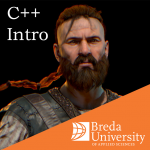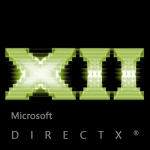One of the harder concepts in C++ is the concept of pointers. Pointers have everything to do with the very nature of the language: C++ gets you pretty close to the hardware you are working with, and one of the most important parts of that hardware is memory. In this tutorial, you will learn to use pointers to refer to memory addresses.
Category Archives: C++ Tutorials
C++ Fast Track for Games Programming Part 7: Debugging
This episode covers debugging. We will see how an application can be halted at any time or at a specific line and how we can inspect variables to verify that everything works as intended. Debugging can be a complex process but we’ll limit ourselves to the basics of breakpoints and following program flow, while keeping an eye on variables.
C++ Fast Track for Games Programming Part 6: Floats
In this tutorial, we’re going to look at how you can get the computer to calculate with decimal values (numbers like 3.14, called floats), instead of only integral values (numbers like 3, called integers).
C++ Fast Track for Games Programming Part 5: Conditions
This tutorial is about the condition commands C/C++ has which allow you to make automated decisions in your program. You already used conditions when you did loops (perhaps without realising it), but in this episode we will look at more explicit conditions.
C++ Fast Track for Games Programming Part 4: Sprites and Loops
This tutorial is about two things: sprites and loops. Sprites will get you on your way to making interesting stuff move on the screen, whereas loops will help you write less code to do more. On with the show!
C++ Fast Track for Games Programming Part 3: Variables and Functions
The previous tutorial introduced you to the template. You can now draw some lines and print some text in all kinds of colours, but that’s clearly far from the goal of making actual games, where bullets wizz past in glorious 3D and enemies flank you in the smartest ways. To get a bit closer to that, we’ll take the static coordinates from last time and make them a bit more flexible by using C++ variables and functions. We’ll need that for the next part, which is all about loops, sprites and other bouncy things.
C++ Fast Track for Games Programming Part 2: The Template
As you noticed in the first article, setting up a project in Visual Studio can be quite a task. And we didn’t (nearly) touch all the settings that you can adjust for a project either. To make your life a bit easier, we will use a project template from now on. This template is simply a directory that contains all the files that you need, with all the settings tuned just right for the kind of programs that we will be building in this series. The template also contains a bit of code that you need for most projects, so that you don’t have to type it yourself. This code aims to take away the platform specific things from you; i.e. it opens a window, lets you draw to it, and updates it for you. Sounds simple, but really it isn’t. Windows operating system can be quite a nightmare to deal with properly, and since that’s just not the core of game development, we felt it’s best to take care of that once and for all. The result is the template.
Continue reading
C++ Fast Track for Games Programming Part 1: Getting Started
Welcome to the first article in the Programming C++ Fast Track tutorial series! These tutorials are designed to take you from zero to a decent entry level in a somewhat smooth fashion. We start at the absolute basics: all that you need to get started is a laptop or PC, a fair bit of time, and quite a bit of dedication.
Learning DirectX 12 – Lesson 1 – Initialize DirectX 12
This is the first lesson in a series of lessons to teach you how to create a DirectX 12 application from scratch. In this lesson, you will learn how to query for DirectX 12 capable display adapters that are available, create a DirectX 12 device, create a swap-chain, and you will also learn how to present the swap chain back buffer to the screen. In this lesson, you will also create a command queue and a command list and learn how to synchronize the CPU and GPU operations in order to correctly implement N-buffered rendering.


